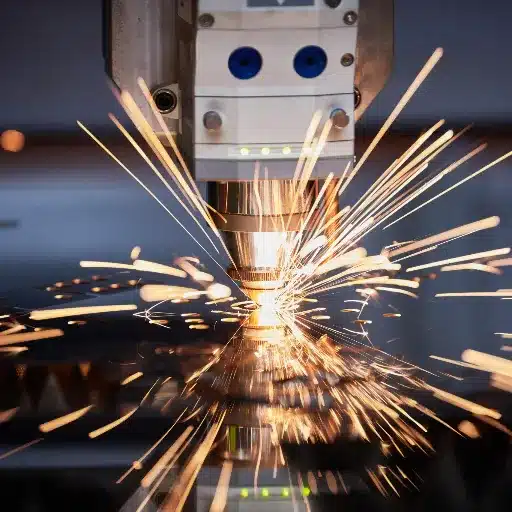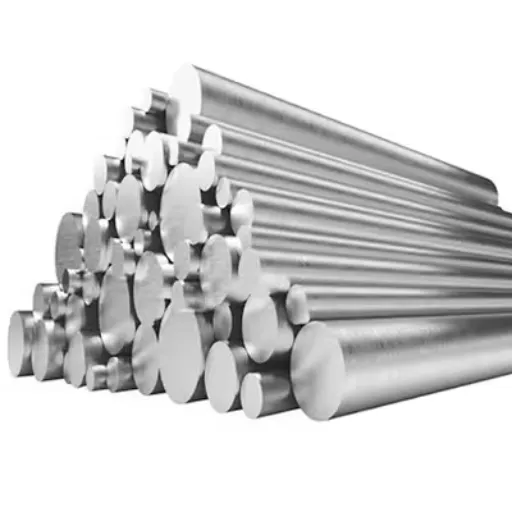For manufacturers in different sectors, picking a supplier for 316L stainless steel strips is an important decision. This guide seeks to discuss the most critical elements of a potential supplier so that you have all the necessary information to make a decision. This blog post addresses understanding the basic characteristics of stainless steel 316L and its relevant use cases, evaluating supplier credentials and product quality, as well as customer support. So, whether it is high-grade materials for manufacturing, precision parts for construction, or specialized equipment, this guide is designed for you to establish a proper collaboration that will fulfill your requirements.
What Should You Look for in a 316L Stainless Steel Strips Supplier?
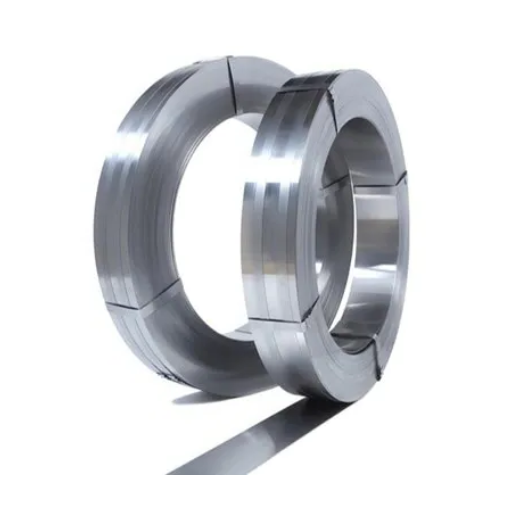
When selecting a 316L stainless steel strip supplier, prioritize the following factors:
- Material Quality and Standards – Verify if the supplier provides high-quality 316L Stainless steel strips which are made and well-packaged per industry standards like ASTM or ISO certs.
- Experience and Reputation – To ensure reliability and expertise, opt for a supplier who has been positively reviewed within the industry and has a proven track record.
- Customization Options – Check if the supplier offers customization options in regards to width, thickness, and surface finish to tailor them to your project specifications.
- Timely Delivery – Focus on the supplier’s capability to deliver products in time for critical manufacturing or construction schedules.
- Technical Support and Customer Service – Choose the supplier that best meets your needs for proactive technical assistance and responsive customer support.
By applying these criteria, you can develop a strong partnership with the supplier.
Why is corrosion resistance crucial in 316L stainless steel?
The 316L grade stainless steel’s corrosion resistance property plays a significant role due to the need for steadfast reliability and durability over prolonged periods in harsh settings. It has prominent resistance to pitting and crevice corrosion in chloride-rich environments, which makes it suitable for marine applications and use in chemicals and medical processes. In addition to improving efficiency in demanding industries, corrosion resistance also reduces the maintenance requirements and prolongs the component’s service life, thereby decreasing costs.
How do mechanical properties affect the quality of 316L stainless steel strips?
Understanding the quality and application of 316L stainless steel strips requires insight into their mechanical properties, including tensile strength, yield strength, and elongation. The tensile strength of stainless steel strips 316L is in the range of 485 MPa to 620 MPa. Yield strength, on the other hand, is often around 170 MPa minimum. Furthermore, elongation, which gauges ductility, is 40% as a minimum. With these parameters, the strips are capable of enduring mechanical stress without deforming or breaking, ideal for industries that require durability and flexibility. Moreover, low carbon content improves the material’s weldability and reduces carbide precipitation during welding, protecting structural integrity in critical conditions.
What role does molybdenum play in 316L stainless steel?
Molybdenum is important since it adds value to 316L stainless steel. Molybdenum enhances resistance to pitting and crevice corrosion, particularly in chloride-rich environments, which makes 316L perfect for marine, chemical, and pharmaceutical sectors. Typically, Molybdenum makes up 2-3% of 316L stainless steel, and this explains why 316L stainless steel is far more corrosively resistant than 304 stainless steel, which lacks molybdenum. Moreover, molybdenum strengthens the material at high temperatures, thus increasing stability and durability under tough conditions. This element is a main secondary component that allows 316L stainless steel to withstand the harsh requirements of many industries where aggressive chemicals and saline solutions are present.
How to Choose Between Hot Rolled and Cold Rolled Stainless Steel Strips?
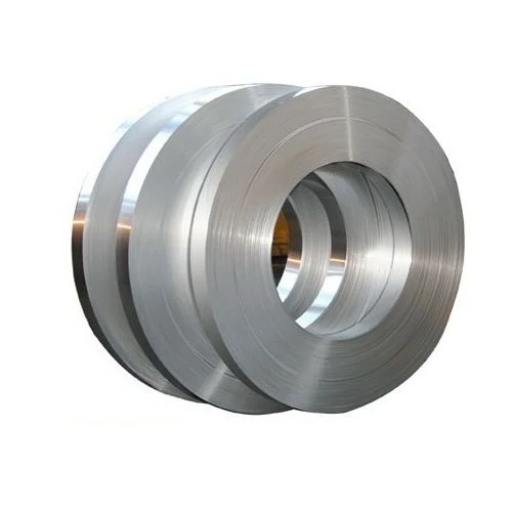
As with every choice, careful thought must go into selecting either hot rolled or cold rolled stainless steel strips based on the individual requirements of each application. Hot-rolled strips are more cost-effective and are appropriate for less critical projects, which do not require smooth finishes or precise measurements. These strips are best on large-scale structural components and applications that need robust strength. On the other hand, cold-rolled strips have superior mechanical properties along with better surface finishes and tighter tolerances. Such attributes surpass cold-rolled strips, making it more ideal for applications that require high precision and aesthetic appeal, along with performance under heavy stress. Make the right choice by evaluating your budget, surface quality, mechanical strength, and dimensional accuracy.
What are the benefits of hot-rolled stainless steel strips?
Hot rolled stainless steel strips provide a multitude of advantages, which make them appropriate for numerous structural and industrial processes:
- Strength: Hot rolled strips, in particular, provide relative mechanical strain strength, making them appropriate for construction and high-stress environments. This feature is accomplished by the hot rolling process that takes place at a temperature higher than the recrystallization point of the material.
- Cost-Effectiveness: Due to the simplicity of the processing for the production of hot rolled strips in comparison to cold rolled strips, and the reduced need for post production processing, manufacturing costs are greatly reduced.
- Superior Weldability: The mechanical properties of hot-rolled stainless steel strips aid in construction and fabrication, owing to the greater ease of welding provided.
- Versatility in Thickness and Width: Unlike cold strips, where the range of thicknesses and widths is specific, hot rolling provides greater versatility enabling a target design specification at an ease.
- Resistance to Corrosion (Specific to Stainless Steel Variants): As with other forms of stainless steel, hot rolled strips exhibit astounding resistance to corrosion and oxidation making it suitable in tough environments.
Technical Parameters
- Thickness Range: 1.2 mm to 20 mm.
- Width Range: Up to 2000 mm.
- Tensile Strength: Stainless steel grade determines the value, which ranges from 480 MPa to 620 MPa.
- Yield Strength: Also depends on the specification of the material, but is typically within 190 MPa and 450 MPa.
The hot rolled stainless steel strips can be used in any application that requires high strength and durability while also maintaining a low cost, alongside a light surface finish.
When should you opt for cold-rolled stainless steel strips?
Sheet strips of cold rolled stainless steel are preferred when its polishing or aesthetic appearance is of highest importance, since its mechanical properties alongside surface polish are its hallmark features. The value of these strips is greater than hot rolled ones because cold rolled undergoes extra treatment, unlike hot rolled, which further increases surface value and stability.
The following are scenarios where cold-rolled stainless steel strips would be of more value:
- High Surface Finish Requirements: Their even polishing plus the lack of pores is advantageous for medical tools and electronic devices while also serving aesthetic functions.
- Tight Dimensional Tolerances: Satisfy the demand for strict tolerances needed for precision parts and consistently favorable results in precision engineering components.
- Enhanced Strength and Hardness: The Primary benefit increased by cold in cold rolling is higher tensile and yield strength, making it favorable for structural and load-bearing uses.
- Thickness Range: Size availability is preferred to hot rolled counterparts, and cold rolled has a thickness of about 0.1 mm – 3.0 mm.
- Width Range: Most of the time, up to 1250 mm, depending on the producers.
Depending on the particular grade and further processing, cold rolled strips have tensile strength between 600 MPa to 800 Mpa while yield strength spans 260 MPa to 720 MPa. Cold rolled offers most value when in need of high aesthetic appearance combined with high precision tolerances in addition to functional material properties.
Understanding Standards: ASTM A240 and UNS S31603
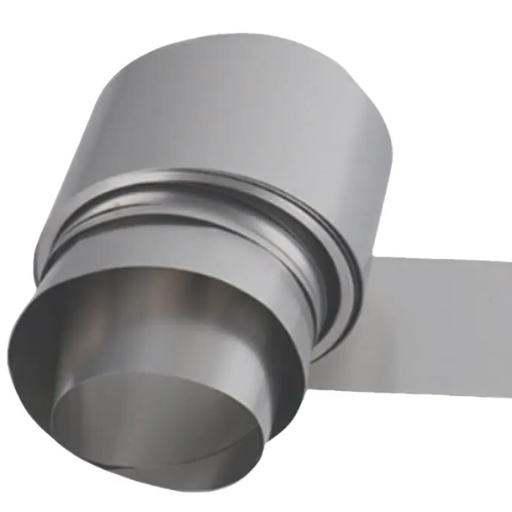
ASTM A240 sets forth the specification requirements for chromium and chromium-nickel stainless steel plate, sheet, and strips tailored for pressure vessels and other general applications. It stipulates the obligatory aspects of the chemical composition, mechanical properties, as well as, the tolerances to be maintained for optimum performance and remarkable life span in multi-storied structures and industrial machines. Following this standard ensures materials are compliant with rigid requirements concerning strength, resistance to corrosion, and the ease of fabrication.
316L stainless steel is better known as UNS S31603, and it belongs to the low-carbon 316 stainless steel family. This alloy is well known for its corrosion resistance, especially in chloride and acidic environments, making it useful in chemical processing, marine medical appliances, and offshore structural engineering. Its significant presence in harsh operational environments enhances maintenance and operational safety. Its low carbon content increases weldability and reduces the likelihood of carbide precipitation, as well.
Superior range of functionality coupled with diverse scope in industrial fabrication and designs is possible due to the flexibility offered by the standards UNS S31603 and ASTM A240. Together, these standards prove essential for industries that require materials that offer strength along with resistance to corrosion.
What is the significance of ASTM A240 in stainless steel manufacturing?
ASTM A240: these “key kech” in the world of plating chromium and chromium-nickel alloys in stainless steel sheets, strips, and plates used in pressure vessels alongside other applications. This standard guarantees vigor and endurance, as well as compliance with critical qualitative standards for engineering and industrial disciplines alike. Essential technical elements provided by ASTM A240 are:
- Chemical Composition: Defines boundaries for carbon, chromium, nickel, manganese, sulfur, and phosphorus, and their optimal corrosion resistance and mechanically propulsive character. For example:
- Grade Type 304 304 L Max. Carbon Content 0.08% / 0.03%
- Grade 316 316 L Chromium Content 16.0 – 18.0%
Grade 316 316 L Nickel Content 10.0 – 14.0%
- Mechanical Properties:
- Grade 304 316 Minimum Yield Strength 205 MPa
- Grade 304 316 Minimum Tensile Strength 515 MPa
- Elongation min in 50mm: 40%
- As for thickness accuracy, flatness, and width of the alloy, tolerances in dimensions further add to the post-fabrication volatility of alloys in devices.
Industry engineers and builders are chasing hints through maintaining reduced alloy operational consistency per such standards, while add food industry, chemical process, and construction fields became the main consumers of these services. Acquisition of A240 compliance enables stable wrought products standards through stainless plates all over the globe.
How does UNS S31603 classification impact material quality?
Having an UNS S31603 classification means the material has high quality. Because it marks it as a low-carbon 316 stainless steel, it is resistant to corrosion, especially to sensitization and intergranular corrosion. Furthermore, it has better weldability and increased durability. This classification is suitable for use in severe or corrosive conditions, which include chemical processing or marine environments.
Who are the Leading Stainless Steel Strip Manufacturers?
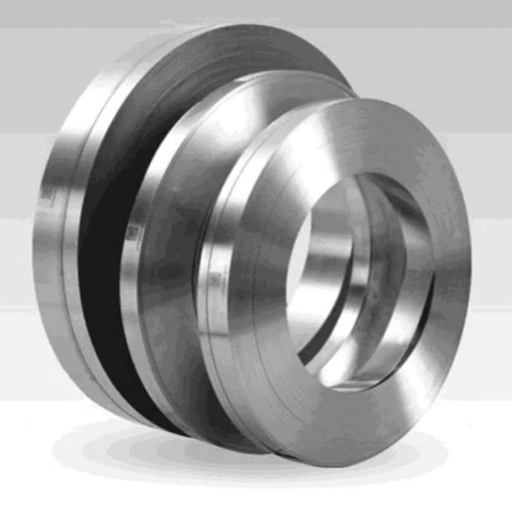
A few companies dominate the market as multipurpose stainless steel strip manufacturers, and their associated brand names include Aperam, Outokumpu, ArcelorMittal, Acerinox, and Nippon Steel Corporation, which are known for the quality, innovation, and dependability of their products. These manufacturers are recognized globally for producing high-performance stainless steel strips tailored for various industrial uses, which include automotive, construction, and chemical processing industries. Advanced technology and high-quality standards help these companies stay on top of the industry.
What sets apart top manufacturers like TISCO and POSCO?
The POSCO and TISCO case studies highlight the best practices focusing on innovation, quality, and sustainability in the steel sector value chain. For example, TISCO is well known for introducing new ideas and products in the stainless steel sector. The company also offers a wide range of products of the highest grades to meet the needs of complex industries. On the other hand, POSCO sets itself apart from competitors through the application of modern technology and green solutions, marking the company as a leader in the industry. Both of these companies combine skillful engineering and unrivaled customer service, providing leadership in the global competition for stainless steel.
How do regional suppliers in India compare to international players?
Domestic regional stainless steel suppliers in India have shown competitive strengths in having sophisticated cost structures, in-depth knowledge of their local scope of work, and domestic marketplace agility. While they may lack advanced technology or an accommodating scope of operations, they are very important because of their position and tailored marketing strategies. Indian suppliers often target small to medium enterprises with custom-tailored solutions because of comparatively low production costs and readily available local raw materials.
Regional suppliers are at par with or specialize in international players in commercially sensitive industrial benchmarks, such as consistency in quality, adoption of modern technology, and long-term performance under specified industrial conditions. POSCO or Outokumpu are globally recognized for leading industry-grade deals in commercial detailing, like precision in grade compositions, corrosion resistance escalating class, and systematic quality control escalation.
Crucial strategic areas that differ are:
- Material Purity and Grade Accuracy – Claiming higher margins, international marks may undercut regional ones on alloy composition tolerances.
- Corrosion Resistance – Coatings and alloy mixes from international marks are harsher and perform better in hot zones.
- Surface Finish – International producers are specialized in meeting customer requirements for food processing or medical instrument grade finishes.
- Sustainability Metrics – International suppliers, including some Indian suppliers, are still adopting integrated recycled content and energy-efficient practices, while global players tend to incorporate them more profoundly.
In general, Indian suppliers are more regionally focused concerning the combination of accessibility and cost-effectiveness, while international manufacturers have clearly defined areas of high specialization due to their advanced technologies and abundant resources.
How to Ensure Quality When Buying from a Strips Exporter?

To guarantee efficiency when buying from a strips exporter, first confirm their certifications and compliance with industry standards like ISO or any other comparable standards. Evaluate sample pieces for material properties like performance consistency. Check out some client reviews or case studies to assess their dependability and standing in the field. Besides, check their sustainable practices (if that is important to you) and their production capabilities. Making your goals clear regarding what you need can minimize miscommunication, avoid discrepancies, and guarantee a successful deal.
Key Indicators of a Reliable Strip Supplier
- Material Quality
Evaluate a supplier’s ability to deliver materials consistently and of the required quality standards, such as having relevant certifications ISO 9001. Ensure the material specifications, including tensile strength, elongation, and hardness, meet your technical requirements.
- Production Capacity and Scalability
Make sure that an evaluation is done on their production capabilities so that there is no discrepancy in the previously established demand and supply within the time constraint set. Look for information such as order lead times and production volume per month.
- Technical Expertise
They must know their products in detail to give adequate technical support; this information must be readily available. Make sure that they can recommend appropriate strip grades, coatings, or tolerances for your specific applications.
- Customization Options
See if the supplier can offer enhanced customization of the dimensions or surface finishes for the strips according to the project requirements.
- Testing and Quality Control
Ensure that appropriate methods of testing like tensile or surface roughness measurements are utilized. `Responsible suppliers should always provide test reports or certificate of analysis for each batch supplied.
- Reputation and Reliability
Analyze testimonials, case studies, and references from available clients to assess how reliable they are for your projects. An established history of on-time delivery with quality work is fundamental.
- Sustainability Practices
If the supplier pays attention to sourcing materials in a responsible manner, check further for their commitment to sustainable manufacturing practices, including waste recycling and energy consumption reduction.
It is possible to select a partner with confidence after taking these considerations into account along with the supplier’s capabilities from both technical and practical perspectives.
How to verify the stainless steel sheet supplier’s credentials?
To determine whether a supplier of stainless steel sheets is legitimate or not, take into account the following aspects:
- Certifications and Compliance
Examine whether there are particular certifications suppliers of stainless steel sheets need to have, such as ISO 9001 for quality management systems, or ISO 14001 for environmental management. In addition, make sure the stainless steel is compliant with industry standards for chemical composition and mechanical properties like ASTM A240 or EN 10088-2.
- Material Traceability
Ensure that you get documentation for material traceability like Mill Test Certificates (MTC). These documents should include details, which include, but is not limited to, the origin, chemical composition, and mechanical properties of the stainless steel sheets. Ensure details such as grade (for example 304, 316) and specifications are compliant with your needs.
- Production and Supply Capabilities
Examine the supplier profile, paying close attention to their manufacturing capabilities to include range of thicknesses (for example, 0.4mm to 50mm), surface finishes (which can include but are not limited to 2B, brushed and mirror) and custom dimension production, if applicable. Verify timeframes along with the quantity of orders deemed reasonable, and if there is capability to increase scale of production for bigger projects.
- Customer Reviews and References
Assess reliability and consistency through reviews found online or by formally requesting references from previous clients. Such trust in the supplier is built by receiving customer feedback related to the supplier’s adherence to timelines for delivery, product and service quality, and provided assistance.
- Compliance with Sustainability Standards
Check if the supplier complies with sustainability practices like decreasing carbon footprints, recycling, or using less energy in manufacturing. A lot of suppliers voluntarily comply with global sustainability frameworks like LEED standards.
These guidelines help ensure the selected supplier meets the practical and technical requirements for the procurement of stainless steel sheets.
References
- Aoxing Metal – 316L Stainless Steel Strip Manufacturer and Supplier: Offers insights into identifying reputable suppliers specializing in stainless steel.
- Stainless Steel Manufacturers Directory: A directory of leading manufacturers and suppliers of 316 stainless steel.
- Nickel Institute – Design Guidelines for Stainless Steels: A comprehensive guide on the selection and use of stainless steels.
Frequently Asked Questions (FAQ)
Q: What are the key properties of 316L stainless steel strips?
A: 316L stainless steel strips, also referred to as UNS S31603 stainless steel strips, are known for their excellent corrosion resistance, particularly in marine and petrochemical environments. They are low carbon variants of 316 stainless steel, which makes them ideal for welding and reduces the risk of carbide precipitation.
Q: How do 316L stainless steel strips compare to 304 stainless steel strips?
A: While both 316L and 304 stainless steel strips are austenitic and offer good corrosion resistance, 316L strips contain molybdenum, which enhances their resistance to chlorides and acidic environments. This makes 316L more suitable for harsh environments compared to 304.
Q: Why is ASME SA240 important when selecting stainless steel strips?
A: ASME SA240 is a specification that covers chromium-nickel stainless steel plate, sheet, and strip for pressure vessels and general applications. When selecting stainless steel strips, ensuring they meet ASME SA240 standards guarantees quality and suitability for industrial applications.
Q: What should I consider when choosing a supplier and exporter for 316L stainless steel strips?
A: Look for a supplier and exporter with a strong track record who offers competitive pricing and high-quality stainless steel 316L strips. It’s also important that they provide proper certifications, such as ASME SA240, to ensure the material meets industry standards.
Q: Are there specific applications where 316L stainless steel strips are preferred?
A: Yes, 316L stainless steel strips are preferred in industries such as food processing, pulp and paper, and chemical processing due to their excellent corrosion resistance and strength. They are also commonly used in the fabrication of coils and strips for doors.
Q: How does the annealing process affect 316L stainless steel strips?
A: Annealing 316L stainless steel strips helps to relieve stresses, increase ductility, and optimize corrosion resistance. This process is crucial in ensuring the strips maintain their mechanical properties and performance in demanding applications.
Q: What are the benefits of using stainless steel coil products in manufacturing?
A: Stainless steel coil products, including 316L stainless steel coil, offer high strength, durability, and resistance to extreme temperatures and corrosion. They are versatile and can be used in a wide range of manufacturing applications, including the construction of machinery and equipment.
Q: How can I find a reliable stainless steel sheet supplier in specific regions like Sri Lanka or the Czech Republic?
A: To find a reliable stainless steel sheet supplier in regions such as Sri Lanka or the Czech Republic, consider researching local industry directories, attending trade shows, or consulting with business networks specific to the steel industry.
Q: What is the significance of the low carbon content in 316L stainless steel strips?
A: The low carbon content in 316L stainless steel strips minimizes the risk of carbide precipitation during welding, which can otherwise lead to intergranular corrosion. This makes 316L an excellent option for welded structures in corrosive environments.


